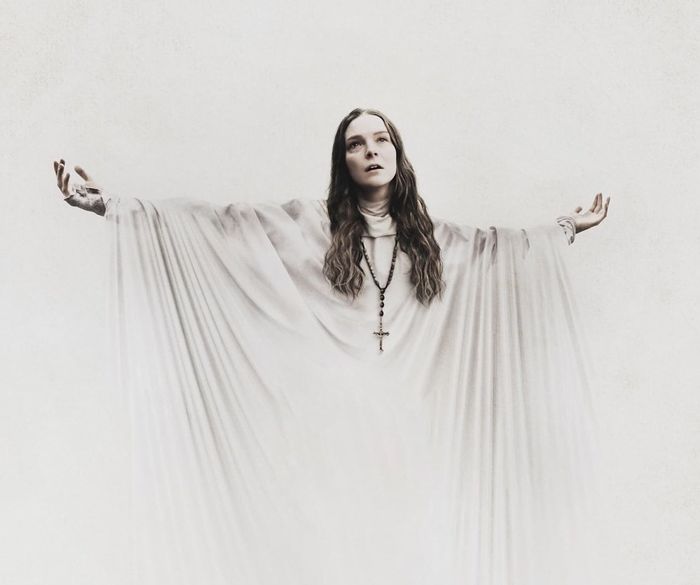Director Spotlight: Baz Luhrmann
Put on your rose coloured glasses and hit play on Lana Del Rey — Maria Cleasby dives head first into the sequin-studded spectacle that is director Baz Luhrmann.
There are few directors so suited to the task of lavish hedonism than Baz Luhrmann. The Australian born director has risen to fame with a repertoire of only five feature films, each just as luxurious as the next. Despite such a small filmography, he has nonetheless achieved massive notoriety, working with household names like Leonardo DiCaprio and Nicole Kidman, and producing hugely successful adaptations of classics like The Great Gatsby and Romeo and Juliet.
Since 1992, Luhrmann has averaged a film every five years, but it’s not hard to see why they take so long to materialise. Just watching one leaves you with a distinct desire to lie down in a dark room until the pervasive glare of sequins and sweat has faded; I can hardly imagine how exhausting they must be to make. For critics, this is exactly what makes him so frustrating. His work is branded indulgent to the point of vapidity, all style and no substance. They’re fun to watch, sure, but that’s about it.
Certainly, no one can say of Luhrmann that his films are boring. From the editing to the score, they are infused with life and energy. His boppy soundtracks might be criticised for their lack of coherence and failure to match the approach of the source material, but they give his films a vivacity that is often sorely lacking from adaptations. The music that underscores Romeo + Juliet is a chaotic whirlwind of style and genre but also a refreshing update. The same with Gatsby which featured artists like Jay-Z and Lana Del Ray and brought an element of modernity to a century-old story. The music isn’t an afterthought, it’s a part of the experience.
This is a wider theme in all of Luhrmann’s work – everything is meticulously thought out despite its kaleidoscopic feel. His own background, spending much of his childhood in his mother’s dance studio, speaks to a keen sense of rhythm, pace, and spectacle. These attributes creep into everything he does as a director. From the actors themselves to the movement of the camera, right down to the costuming, it’s all carefully choreographed. He makes it easy to fall into the worlds that he creates because you know you’re in safe hands, always engaged but never lost. All he asks for is a little suspension of disbelief, a feat easily achieved given the content of his work.
“Realism can be incredibly emotional, but telling stories in which emotions often run richer than real life requires something more.”
His first three films (Strictly Ballroom, Romeo + Juliet, and Moulin Rouge) are often termed the Red Curtain Trilogy. They are appropriately named given the theatrical imagery that reappears throughout and the distinct motifs that each use: dance, poetry, and song, respectively. Their plots, however, in contrast to the raucous depiction, are simplistic but powerful. They’re towering stories of forbidden love, not designed to be realistic. They work best when placed in a heightened world where the visual experience can match the emotional demands.
Admittedly, this technique is not always successful. Strictly Ballroom, as his earliest work is, naturally, not perfect. What will become Luhrmann’s style – the pacing, the humour, the quick, sharp cuts, and zany characters – shines through, but the plot is practically an irrelevance, and the ending annoyingly upbeat.
A quick glance at his work since, and a different theme emerges: Romeo + Juliet? Not exactly a fairy tale. The Great Gatsby and Moulin Rouge? Well, no spoilers, but suffice it to say that his preference is for tragic romances; he’s not actually that interested in happy endings.
It’s precisely this tragic element that elevates his style from merely entertaining to heartbreakingly effective. For all the artistry, the gaudy embellishment, and the excess, he can bring you from elation to devastation with the cut of a frame. His films don’t just embrace hedonism, they use it, play with it to add an edge to the story. Those rose-coloured glasses make the blood all the more vivid. No wonder, then, that the source material of Luhrmann’s adaptations are all in the same vein. They’re about the highest highs followed by the lowest lows.
Realism can be incredibly emotional, but telling stories in which emotions often run richer than real life requires something more. His work isn’t unadulterated escapism, far from it. He elevates reality to speak to the qualities he sees in tragic love stories and, as a result, makes them hit much deeper.
 News / Clare Hall spent over £500k opposing busway 24 December 2025
News / Clare Hall spent over £500k opposing busway 24 December 2025 Comment / The ‘class’ of Cambridge24 December 2025
Comment / The ‘class’ of Cambridge24 December 2025 News / Caius mourns its tree-mendous loss23 December 2025
News / Caius mourns its tree-mendous loss23 December 2025 Comment / League tables do more harm than good26 December 2025
Comment / League tables do more harm than good26 December 2025 News / Girton JCR publishes open letter expressing solidarity with Palestine25 December 2025
News / Girton JCR publishes open letter expressing solidarity with Palestine25 December 2025









